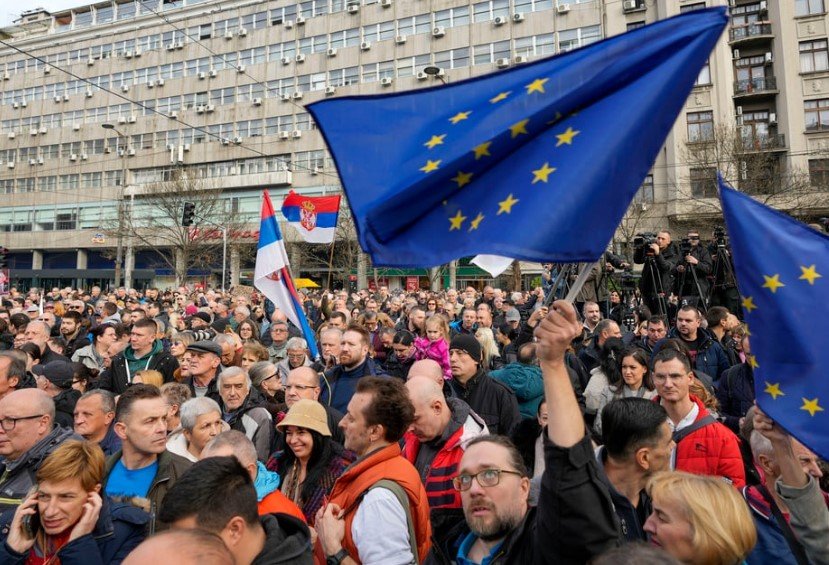At least three Serbian MPs were injured in a heated parliamentary session on Tuesday as opposition lawmakers detonated smoke grenades inside the chamber. One politician reportedly suffered a stroke and remains in critical condition. The violent confrontation was a dramatic escalation of tensions fueled by student-led protests that have shaken the country for months.
Parliament Turns Into a Battleground
Lawmakers were seen clashing with security personnel as thick smoke filled the chamber. Television broadcasts captured scenes of chaos—politicians coughing, shouting, and even engaging in physical altercations. The incident is the most extreme yet in an increasingly volatile political climate.
The opposition’s move to use smoke grenades came amid widespread frustration over how the government has handled recent protests. The demonstrations began after a tragic railway station roof collapse killed 15 people four months ago. Since then, the movement has expanded, demanding sweeping reforms and greater transparency.

Protests Gain Momentum, Government on Edge
What started as outrage over a single catastrophe has snowballed into a nationwide uprising. Protesters accuse the government of corruption, negligence, and authoritarian tactics. Demonstrations have been particularly intense in Belgrade, with thousands gathering in front of the National Assembly.
- Students have been at the forefront, using social media to organize rallies.
- Calls for government resignations have grown louder.
- Police responses have been met with criticism over alleged excessive force.
With banners reading “Serbia is rising up for the regime to fall,” the movement shows no signs of slowing down.
How Did It Get This Far?
The Serbian government has dismissed the protests as politically motivated, but public anger continues to build. The collapse of the railway station was the trigger, but deep-seated frustrations over economic hardships, lack of press freedom, and alleged cronyism have fueled the fire.
In an attempt to regain control, authorities have arrested dozens of activists and imposed restrictions on demonstrations. However, these measures appear to have only intensified resistance.
The International Response and What Happens Next
Foreign governments and human rights organizations have weighed in on the crisis, urging restraint and dialogue. The European Union, which Serbia hopes to join, has expressed concern over the government’s handling of dissent.
A prolonged standoff between protesters and officials seems inevitable unless a resolution is reached. For now, tensions remain high, and all eyes are on how Serbian leaders will respond in the coming days.
